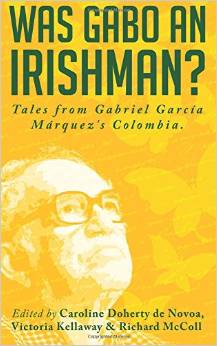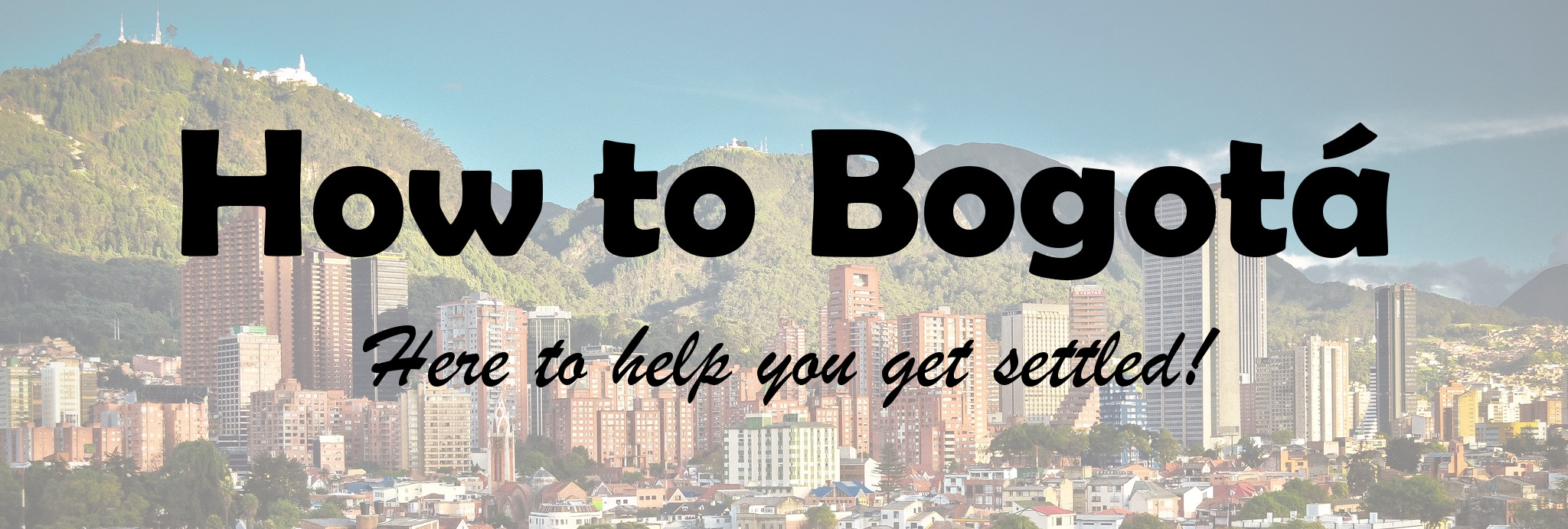Car Horns and Cacophony: A Tale from Gabo’s Colombia
 I’m so pleased that a piece I wrote about one of my everyday experiences in Bogotá (namely sitting in traffic!) was accepted for inclusion in this anthology. It includes work by a number of writers with a connection to Colombia, in memory of the great Gabriel García Marquez, who passed away one year ago on 17th April 2014. My piece considers themes associated with Gabo and his life and work, as well as my own experience and feelings about life in Bogotá as an outsider.
I’m so pleased that a piece I wrote about one of my everyday experiences in Bogotá (namely sitting in traffic!) was accepted for inclusion in this anthology. It includes work by a number of writers with a connection to Colombia, in memory of the great Gabriel García Marquez, who passed away one year ago on 17th April 2014. My piece considers themes associated with Gabo and his life and work, as well as my own experience and feelings about life in Bogotá as an outsider.
“But then I realized that life itself is the greatest source of inspiration and that dreams are only a very small part of that torrent that is life.”
Gabriel García Márquez. The Paris Review. The Art of Fiction. No. 69, 1981.
Car Horns and Cacophony
Travelling through Bogotá by any form of transport is a monotonous and tiring feature of daily life here. One early afternoon on board an SITP bus which was crawling painfully slowly across the city, I sighed and rested the side of my head on the cool, damp glass next to me as my mind began to wander… how is it that we make the daily reality of a two-hour bus journey to work bearable? How do we make anything unpleasant bearable?
My own personal journey had not begun on this bus, but in England, a few months before. I had left my home in London for a foreign land, and in spite of always being able to count on my Colombian partner’s love and support, there were many moments such as this one when I felt quite alone. In some way, on that bus, I felt that I understood the solitude that Gabo must have experienced following his move to Bogotá from his home on the Colombian coast decades before; for life in Bogotá can be a challenging and harsh reality for many… particularly for those who are unaccustomed to it.
During his Nobel prize speech in 1982, Gabo spoke of reality in Latin America as ‘full of sorrow and beauty’; at that very moment, I found myself examining my own bittersweet reality, the sorrow and beauty of my life… sorrow for the home I yearned for, for the friends and family I had left behind, for my struggle to come to terms with my new existence in this chaotic and inharmonious city… juxtaposed with the beauty that was my relationship, which I had chosen over everything that my life had been previously; living in the land of magic realism with its imposing mountains, lush jungles and crystalline seas. Gabo’s early poem, ‘Poem from a seashell’ explores this conflict beautifully:
‘For my sea was the sea eternal,
sea of childhood, unforgettable,
suspended from our dream
like a dove in the air…’
The noises around me—particularly car horns—punctuated my daydream; the bus jerked violently over a hole in the road, slamming my head against the glass, dragging me momentarily from my thoughts. I peered out of the window; cars, trancones, noise… That bus was my vessel and “the sea eternal” was the metropolis of Bogotá; and I was but a drop in the ocean, a mere dot among the throngs…
As I shifted between the present moment and thoughts of Gabo, I wondered… is this what he was trying to achieve with magic realism? Adding a magical quality to the reality around him that would transform monotony and solitude into something intriguing and wondrous? What would Gabo have made of all this current cacophony? I asked myself, as another car horn chorus erupted around me.
“…the truth is that there’s not a single line in all my work that does not have a basis in reality.”
—The Paris Review. The Art of Fiction. No. 69, 1981.
The car horn is a common feature of daily reality in Bogotá, and it has more uses than one might imagine. As a single hand gesture can convey numerous different meanings depending on the country and context, so too can the honk of a horn in Bogotá. On that bus journey alone, I noted that it was often used by drivers to alert pedestrians that the car was heading towards them (with the implication that it wouldn’t be stopping if they happened to be in its path). I also observed that it was particularly important to honk one’s horn when approaching a crossroads, whilst speeding up, in order to warn other cars which might be approaching the junction from other directions that you were coming and had already hit the accelerator.
But in Colombia, the car horn is also the sound of celebration; camaraderie; frustration; passion; protest; intimidation; impatience; and illusion. I shifted in my seat and once again examined the chaos surrounding the bus. Colombian drivers appeared to live in the fantastical hope that someday their horn would conjure up a force strong enough to move the stationary cars in front of them, or perhaps even endow the other vehicles with supernatural properties that would allow them to pass through the bus which had crashed in the middle of the junction ahead. As the bus slowly approached the traffic lights and the mechanical orchestra reached its climax, I imagined every car windshield separating the drivers from the world outside, as Gabo’s blurred line separated reality from the imaginary… “reality isn’t limited to the price of tomatoes and eggs. Everyday life in Latin America proves that reality is full of the most extraordinary things,” he once told Plinio Apuleyo Mendoza. Surely, therefore, it wasn’t entirely unreasonable for Bogotá’s drivers to nurture the belief that an entire symphony of car horns might eventually cause something phenomenal, nay, magical, to happen?
As my journey neared its end and I pondered these ideas, another line from Gabo’s Nobel prize acceptance speech came to mind; that reality in Latin America “nourishes a source of insatiable creativity.” I thought of my blog and how it had become my outlet for everything I had been feeling and all that I had experienced since my move to Bogotá, and I reflected that perhaps I ought to be grateful for the challenges and chaos of life here; for it was indeed fuelling the creative engine within me, and I was being more artistically productive and ambitious than I had been in years. I smiled as I rose from my seat and pressed the stop button, preparing to disembark the bus. Maybe it’s the reality of Colombia, the land of magic realism, which brings out the “Gabo” in all of us.
The book Was Gabo an Irishman? Tales from Gabriel García Marquez’s Colombia is available for purchase on Amazon, or from various bookshops around Bogotá.
Published by Papen Press, edited by Victoria Kellaway (Banana Skin Flip Flops; Colombia a comedy of errors); Caroline Doherty de Novoa (Dancing with Statues); Richard McColl (Colombia-based journalist and presenter of radio show/podcast ‘Colombia Calling’).

Leave a comment